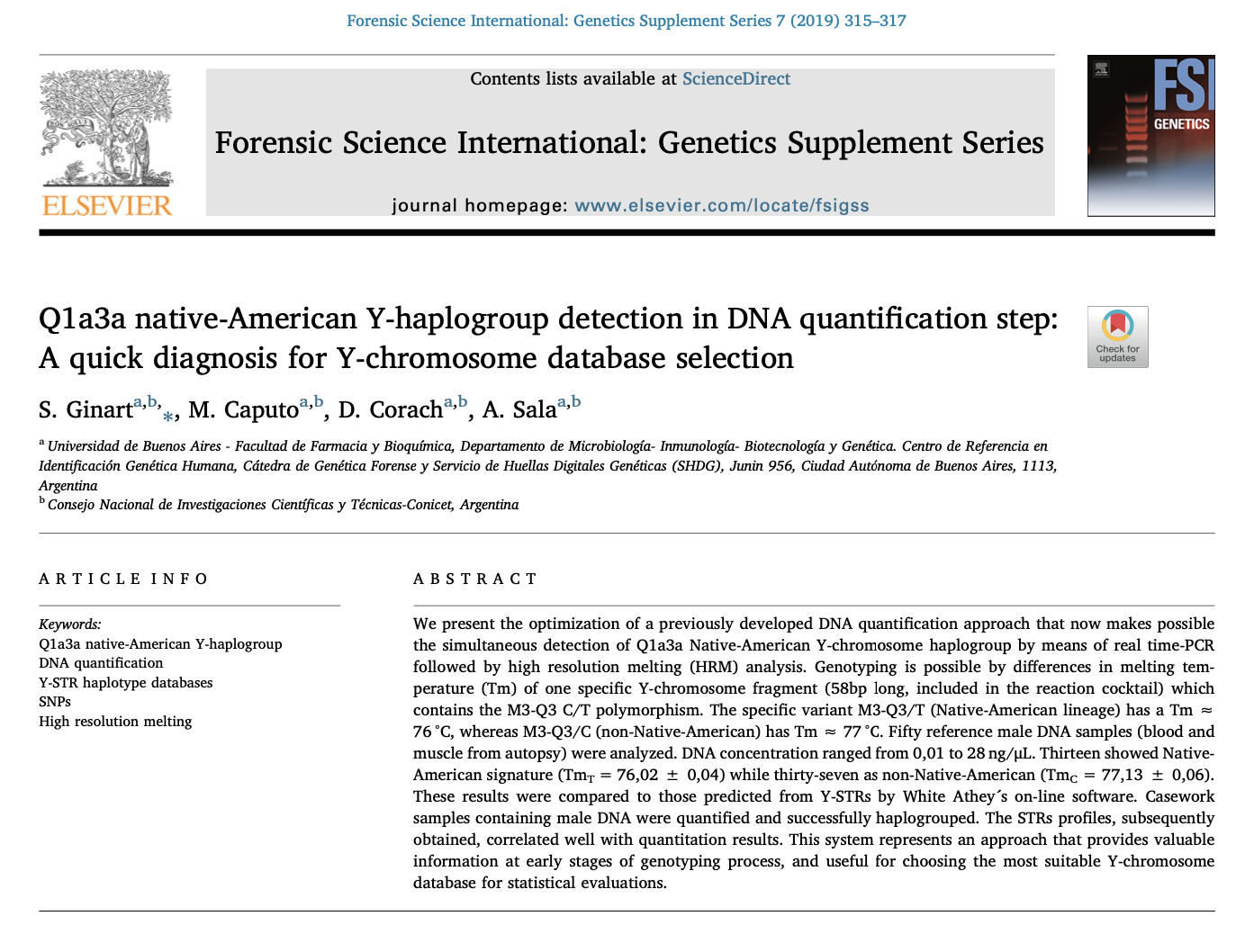
- June 04, 2020
Q1a3a native-American Y-haplogroup detection in DNA quantification step: A quick diagnosis for Y-chromosome database selection
S. Ginart, M. Caputo, D. Corach, A. Sala|Universidad de Buenos Aires – Facultad de Farmacia y Bioquímica, Departamento de Microbiología- Inmunología- Biotecnología y Genética. Centro de Referencia en Identificación Genética Humana, Cátedra de Genética Forense y Servicio de Huellas Digitales Genéticas (SHDG), Junin 956, Ciudad Autónoma de Buenos Aires, 1113, Argentina, Consejo Nacional de Investigaciones Científicas y Técnicas-Conicet, Argentina|2019|Forensic Science International: Genetics Supplement Series 7|315-317 https://doi.org/10.1016/j.fsigss.2019.09.119
Obtaining genetic data of forensic relevance in the early stages is vital for determining the most appropriate workflow. Human DNA quantification systems are efficient tools to simultaneously quantify human DNA, detect male DNA and estimate DNA degradation in one real-time PCR reaction using high resolution melting technologies. Information about genetic ancestry are currently not provided in these kits, but rather after SNP amplification and capillary electrophoresis detection. In this study, a test was developed to detect the Q1a3a Native American Y-chromosome lineage haplogroup (NA-Y-hg) that is defined by the transition of C/T at the M3-Q3 SNP. The test utilises high-resolution melting (HRM) analysis provided by the Mic qPCR cycler software to discriminate NA-Y-hg from the non-Native American Y-chromosome lineage haplogroup (non NA-Y-hg). Genotyping using HRM is possible as the specific variant M3-Q3/T (Native-American lineage) has a Tm of 76°C, whilst the M3-Q3/C (non-Native-American lineage) has Tm of 77°C. The HRM analysis were compared with the White Athey’s haplogroup predictor using Y-STRs and both results agreed. This method is more cost and time effective than previous methods as they require STR amplification and each of the allelic variants to be loaded into the online program.
Read More